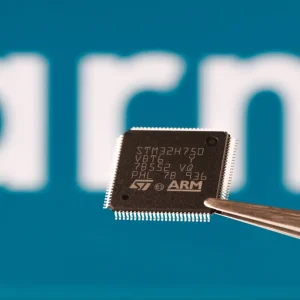IBM Corp’s readying new Java software and hardware technologies it says will resolve the biggest current impediment to Java’s use in the enterprise; performance. After all it’s big iron and associated software and services where IBM makes it money: it’s the server stupid. That’s what this business is all about. IBM says customers understand write once-run anywhere, the JVM Java virtual machine and sandboxes, but they’re using Java in their browsers, and it’s slow, and they’re will it stand up on an S/390? mainframe. In response, IBM’s working on a crash program of technologies it hopes will speed the adoption of Java in enterprise environments. As a heavy user of the NC network computer concept – an enterprise server supporting NC clients throughout an organization – IBM needs to drive its devices faster than the competition. So it’s developing a Java Acceleration Chip, or JAC, which will be implemented as an ASIC alongside the PowerPC RISC chip in its Network Computing Devices Inc-derived Network Station NCs. The JAC will also feature on the boards IBM Microelectronics sells OEM to potential internet device makers. JAC’s based on the CMOS technology used in the company’s S/390 G4 mainframe processors and will pull certain Java routines off the central processor to be executed separately. It’s a co-processor, and does not implement Java instructions in silicon a la Sun Microsystems Inc’s picoJava Java processor design. The JAC is still in the design stage – the work is being done at the company’s Raleigh, North Carolina design labs and the processor will be manufactured in Burlington, Massachusetts. There’s nothing in silicon yet because IBM is working with Sun to enhance the performance of the JVM – which JAC will be optimized for – not by altering existing APIs, but by tinkering with the technology underneath, it explains. IBM and Sun appear to be trying to get their marketing ducks in a row to create some kind of hoopla around their JVM efforts. IBM reckons it will have the JAC ready before the end of next year. It hasn’t ruled out the possibility of doing a native Java processor should the JAC not prove sufficient; IBM’s staked so much on the success of the language it can’t afford for it not to work at top speed. Further out, Big Blue’s TJ Watson Research Center is already working on a prototype microprocessor for running Java and PowerPC object code using VLIW Very Long Word Instruction Word techniques and is designing the part around an extended version of a PowerPC-based VLIW implementation that’s already in the works (CI No 3,166).
Commandment
Meantime, while Sun’s ultra-fast Java HotSpot compiler sits in the test labs, not due for release until next year, IBM’s working on its own JIT Just-In-Time Java compiler as part of a complementary software effort to juice Java performance. IBM’s even prepared to break Sun’s write once-run anywhere commandment when it comes down to optimizing code for use on servers. Its HPJ High Performance Java compiler being developed in Tokyo takes tried and tested Java code and converts it into native machine to ensure it runs as fast as possible on the host environment. It’ll do versions of HPJ for all of its platforms and for third party environments, including NT. Betas are up on IBM’s AlphaWorks web site. IBM will integrate its go-faster server-side Java technologies into new OS/400, MVS and other system software releases in the first quarter of next year. To bring legacy applications into the world of Java, IBM’s Toronto labs is readying a UVM Universal Virtual Machine which will enable users to integrate Basic, Cobol and Smalltalk with Java by using Java Beans and other tools and enable Java applications written using VisualAge to on multiple platforms including AIX, OS/2, Solaris, NT, Windows and HP-UX. We’re doing it, but it’s very much a side-line [to our other Java efforts], IBM says.






